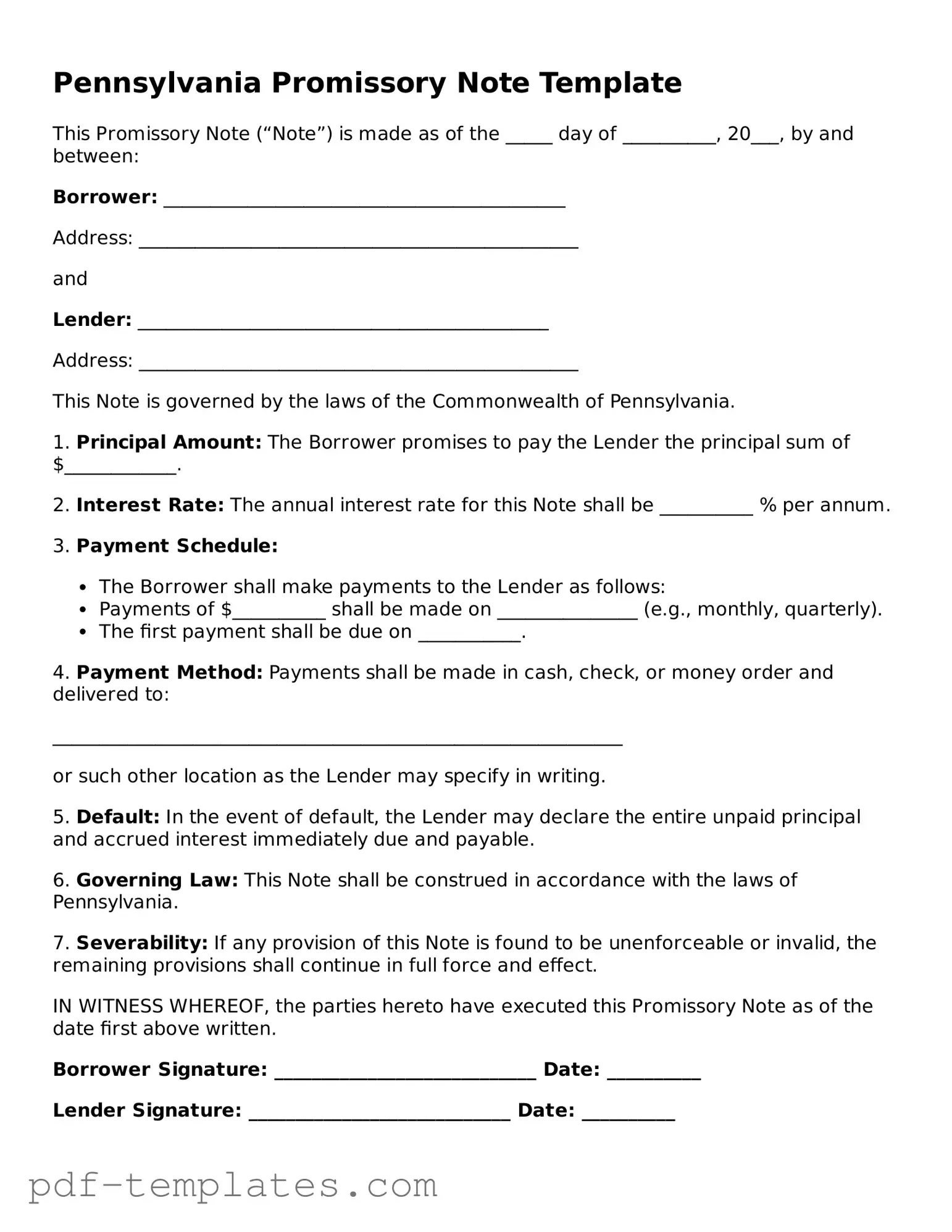A Loan Agreement is a formal document that outlines the terms and conditions under which a borrower agrees to repay a loan. Like a promissory note, it specifies the amount borrowed, the interest rate, and the repayment schedule. However, a loan agreement often includes additional details, such as collateral requirements and the rights of both parties in case of default. This makes it more comprehensive than a standard promissory note, which primarily focuses on the promise to repay the borrowed amount.
A Mortgage is another document that shares similarities with a promissory note. It serves as a security interest in real property, ensuring that the lender has a claim to the property if the borrower fails to repay the loan. While a promissory note signifies the borrower's promise to pay, a mortgage formalizes the lender's rights to take possession of the property under specific conditions. Both documents work together to protect the interests of the lender and outline the obligations of the borrower.
An IOU, or "I Owe You," is an informal acknowledgment of a debt. While it lacks the legal enforceability of a promissory note, it serves a similar purpose by documenting that one party owes money to another. An IOU typically includes the amount owed and may specify repayment terms, but it does not always carry the same level of detail or legal protection. Both documents signify a debt but differ in their formality and potential consequences.
A Personal Guarantee is a document that provides assurance from an individual that they will fulfill a debt obligation if the primary borrower defaults. Similar to a promissory note, it establishes a financial commitment. However, a personal guarantee often applies to business loans and requires the guarantor to use personal assets to cover the debt. This adds a layer of risk for the individual, as they may be held liable for the borrower’s obligations.
For those looking to secure a rental property, completing the necessary essential Rental Application form can streamline the process. This document ensures that landlords receive vital information regarding potential tenants, aiding in the decision-making process for suitable candidates.
A Secured Promissory Note is a variation of a standard promissory note that is backed by collateral. This means that if the borrower defaults, the lender has the right to seize the collateral to recover the owed amount. Like a traditional promissory note, it outlines the repayment terms and interest rate but adds the element of security for the lender. This document provides greater assurance for the lender compared to an unsecured promissory note.
An Unsecured Promissory Note is similar to a standard promissory note but does not involve any collateral. The borrower promises to repay the loan based solely on their creditworthiness. While both documents outline the amount owed and repayment terms, the absence of collateral in an unsecured promissory note increases the risk for the lender. This type of note often has higher interest rates to compensate for the lack of security.
A Business Loan Agreement is a document specifically designed for loans taken out by businesses. It shares similarities with a promissory note in that it outlines the terms of repayment and the interest rate. However, a business loan agreement typically includes additional clauses related to the operation of the business, such as financial covenants and reporting requirements. This makes it more complex and tailored to the needs of business borrowers.
A Lease Agreement, while primarily used for renting property, can resemble a promissory note in terms of establishing a payment obligation. It outlines the terms under which a tenant agrees to pay rent to a landlord. Similar to a promissory note, it specifies the amount due and the timing of payments. However, a lease agreement also includes rights and responsibilities related to the property, making it broader in scope than a simple promissory note.
An Assignment of Debt is a document that allows a lender to transfer the rights to collect a debt to another party. This document shares similarities with a promissory note, as it involves the same underlying obligation to repay a loan. However, an assignment of debt is focused on the transfer of rights rather than the terms of repayment. It ensures that the new lender can enforce the original terms of the promissory note, maintaining continuity in the debt obligation.
